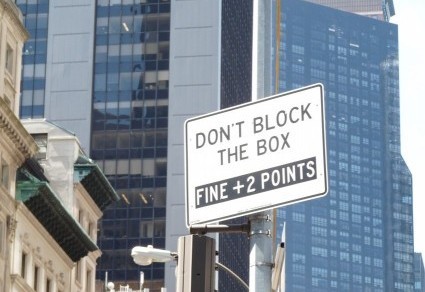As if you didn’t already have enough to worry about, along come a few more things to up your angst level. Take this sign, for example, posted on a construction site near Wall Street:

And here you thought it was enough to educate your kids about sex, drugs, and Internet chat rooms. Hah! Even if you’re far, far away from downtown Manhattan and have no plans to go there, you’re remiss if you don’t sit down with your offspring and explain “the dangers of trespassing on this site” – not the perils of wandering around other sites full of heavy machinery and gaping holes, but definitely this one. Hear that, Tahitians, Alaskans, and Antarcticans? Tonight, after homework check and before toothbrushing, do your duty.
I confess I still don’t understand what this sign alerts me to, and that fact worries me even more:

Are we talking plutonium here? (And if so, wouldn’t it be “radioactive”?) Sparkling pipes in cement that can distract you and make you fall flat on your nose? Maybe a Keith Haring drawing of his trademark “radiant child,” formed from neon tubes? You wouldn’t want to walk over a modern masterpiece. Besides, the two exclamation points imply that radiant tubing is nothing to fool around with. You may suffer unknown consequences if you don’t “beware.” (Make that “beware!”).
I do “beware,” but for safety’s sake I’m not limiting my caution to radiant tubing and construction zones. Here’s my slogan: “Beware of Everything.” Try it. You’ll feel a little anxious, but you’ll be much safer.

























